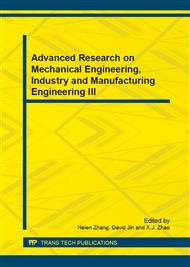p.368
p.372
p.376
p.380
p.384
p.388
p.392
p.396
p.400
Study on the Model of Quantitative Evaluation of Circular Economy Development for Industry Manufacturing Based on WIOA
Abstract:
the importance for sustainable development is increasingly being recognized by the world, and the looking for ways to implement sustainable development has become the focus in domestic and foreign academics. As an effective means of sustainable development, circular economy has been obtained the attention of academics and government. In this study, with the system analysis of development and principle of circular economy, based on the input-output analysis tools, this paper builds an input-output analysis table and the basic evaluation model of circular economy in enterprise for industry manufacturing.
Info:
Periodical:
Pages:
384-387
Citation:
Online since:
August 2013
Authors:
Price:
Сopyright:
© 2013 Trans Tech Publications Ltd. All Rights Reserved
Share:
Citation:


